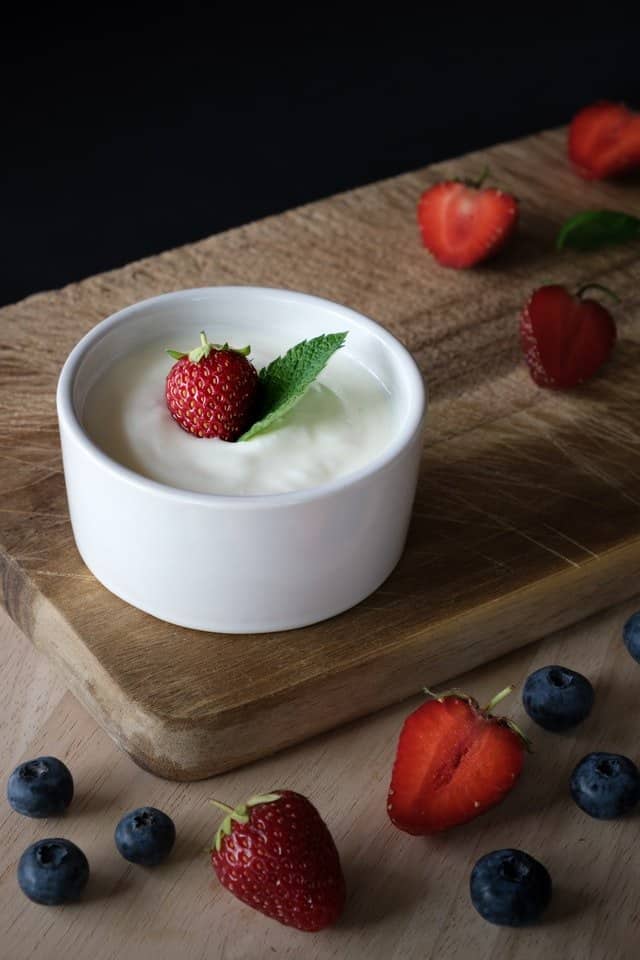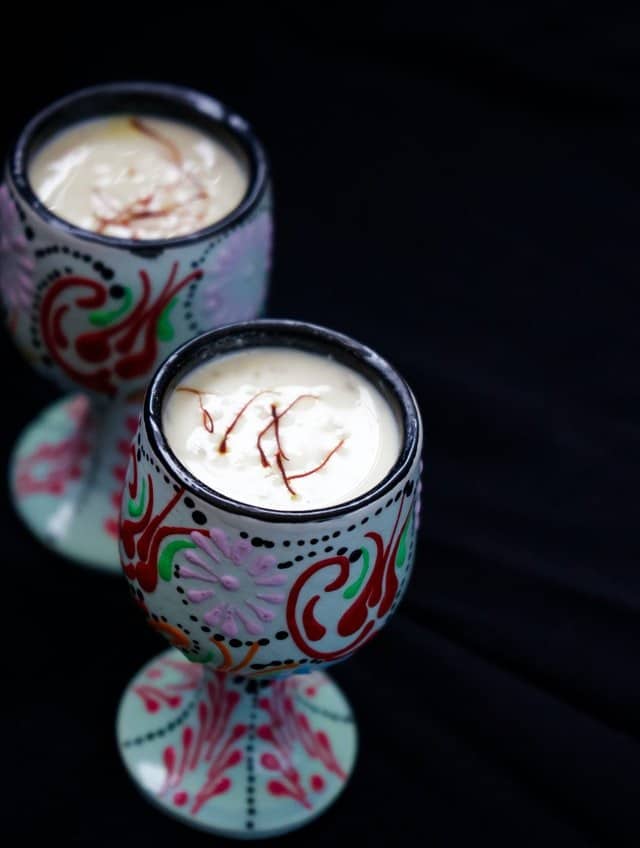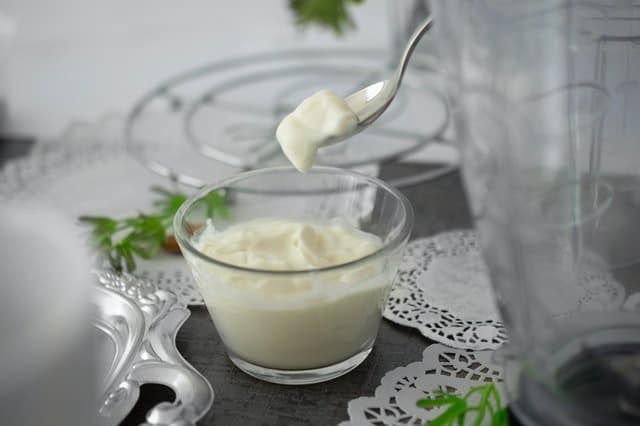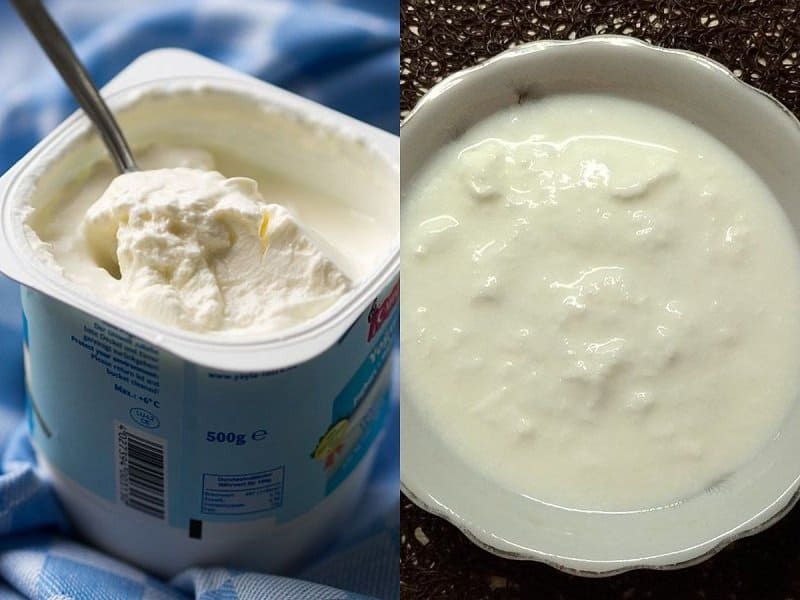One of the most searched topics on the internet after the difference between Biryani and Pulao is “what is the difference between yogurt and curd?” I found my answer exactly 10 years ago in 2010 and thanks to those efforts, today I can share it with you. Being a biotechnologist, I had that thing for researching things and add to it the project work assigned to me, that I was supposed to present in front of my batch mates. I worked hard and finally found the answer. So do you want to know the difference?
Yogurt and Curd for any common man is one and the same thing. Ask any average person who doesn’t have a scientific background and that person will tell you they both are same. Someone who is street smart might tell you that the curd is what we call it in India and Yogurt is what the western countries prefer calling it. So it is not their fault that they can’t differentiate yogurt and curd but over the years this topic has been misinterpreted so much that barely few people know the truth and by the end of this post you will be a learnt scholar.
So I am starting with the simple basics first. Curd is generally any form of milk which has coagulated either by bacterial fermentation, or use of an acidic agent like lemon juice or vinegar. The entire process is called curdling of milk. So technically the soft curd obtained after fermenting the milk is also a curd but at the same time the Indian cottage cheese (Paneer) is also a type of curd. Some other types of cheeses like pot cheese, queso blanco, and mozzarella are also formed by curdling the milk and then processing further. I am sure this is something new to you.

Hence I want to be clear with you from the beginning that we are referring to Indian Dahi as curd in this entire blog post. It is a fermented milk product obtained with use of leftover curd to curdle the milk. Yogurt and curd are both so similar and are yet so different. Let me tell you that Yogurt is not just a fancy name for the Curd or Indian Dahi.
Yogurt and Curd the Stark Difference
To put it in simple terms, yogurt and curd may seem similar but both are fermented differently. The Curd that is consumed in India and the sub-continent has a mixture of Lactobacilli and Lactococci. The number of the bacteria which is called healthy bacteria for gut is not controlled. The variety of Lacto bacteria is also not controlled. The culture propagation occurs by chance and there is no control over the flavour development or texture development. On top of it the external temperature and humidity determines the taste and the pH of the curd.
Whereas the Yogurt in its truest sense is an industrially manufactured product of fermentation biotechnology. For making yogurt a yogurt starter culture is used. It has 2 specific bacteria in it that too in measured numbers which allows for a more controlled flavour profile and texture. This is why you find the yogurt to be much smoother and creamier than the Indian curd. The 2 bacteria used are Lactobacillus bulgaricus and Streptococcus thermophilus with optional addition of other lactobacilli and bifidobacteria.
How Curd is different from Yogurt?
It would be pretty stupid if you ask any Indian or the resident of Indian sub-continent about how to make it. It is one of the simplest things in life. It is eaten throughout the year and thus each household knows how to make it. Just simply warm the milk and cool it down till it is lukewarm and add the starter culture which is the curd itself from the previous batch. Rest it for few hours or overnight and voila!!! Your curd is ready.

How does that sets it apart from Yogurt is the fact that it doesn’t need a control or finesse to make it. Any layman can make it without having a practice of setting curd. The procedure is simple the ingredients are few and you can make curd on a day when you are out of luck so it is that kind of simple. Curd is bit more tangy due to the whey which has the lactic acid in it that gives a tad bit sourness to it.
How Yogurt is made?
It is a simple multistep procedure that might not be viewed as something easy or which you can do it at home. These steps involve few factors that are difficult to replicate at home. So in short word it is safer to say that buying a yogurt is a smart choice than trying to make one at home.

The journey of Yogurt starts from selecting the best quality milk ensuring the right amount of fat content as desired in the end product. So it all starts here. If the milk is leaner then the adequate amount of cream is added.
Next step is something called as homogenization which is nothing but passing the milk under high pressure through a very tiny orifice to standardize the size of fat globules to a standard size. It is done for purposes like better control via increased surface area which is easier for treatment.
After this the most important step of pasteurization is carried out. Which is heating the milk at 71°C for 15 seconds and then cooling suddenly to less than 3°C this is carried out in a heat exchanger.
Finally the milk is heated to break protein content or weaken it and then a temperature of 45°C is maintained throughout the duration of fermentation.
To start the fermentation the 2 important bacteria are added in 1:1 ratio. The ratio of bacteria to milk is 1.25:100 that means 1.25 grams of bacteria is added for each 100 ml of milk.
The milk is maintained at 45°C for 4 to 6 hours to complete the fermentation. Post the procedure the Yogurt is ready to be stored in cool conditions for further use.
So now do you still think that yogurt and curd is the same? Or are you convinced now about the difference between these 2 fermented products?
The two bacteria used here are Lactobacillus delbrueckii subspecies bulgaricus and Streptococcus thermophilus each compliments the other which is a symbiotic relation that eventually makes the Yogurt perfect. Along with the lactic acid production both species of bacteria produce acetaldehyde which grants the flavour to the Yogurt which is slightly on sweeter notes.
Some strains of lactic acid bacteria, including the thermophilic yogurt bacteria, can produce exopolysaccharides that act as stabilizers and thicken the body of yogurt. The creamy texture that is developed in the yogurt is all due to these polysaccharides.
Now has that convinced you enough about how making a yogurt is pretty complex process which need precision control at each stage of protocol. Thus Yogurt and Curd are different in their own special ways.
Nutritional Differences between Yogurt and Curd
I am not a certified nutritionist so I want to be honest with you here that the figures provided below are based on general information. So please do your own research before relying on the numbers. Plus the many factors decide the nutritional values of Yogurt and curd. Some of the important factors are starter cultures, quality of milk, temperature, vessels and duration of fermentation. So the figure available through research are from a small sample size. At same time they are good enough to give us an idea of overall nutrition.
Fats
Let us start with some similarities that both these fermented foods offer. Both have ample amount of omega-3 and omega-6 fatty acids due to their respective fat contents. 100 grams of yogurt has 3 grams of fat out of it 2 grams is saturated fats. 100 grams of curd has 4 grams of fat out of it 2 grams is saturated fats.
Carbohydrates
Yogurt is ahead here as it has 5 grams of carbohydrates per 100 gram and curd has 3 grams of carbohydrates per 100 grams. This makes it confusing to choose between Yogurt and Curd as the score now stands at 1-1 each after fats and carbs analysis.
Protein Content
Yogurt has only 3 grams of proteins and Curd has 11 grams of protein per 100 grams of serving. Now that makes it 1-2 for Yogurt and Curd.
Calories Count
100 grams of yogurt contains 60-85 calories out of which 29 calories come from fat. On the other hand, 100 grams of Curd contains 98 calorie of which 38 calories come from fat. This is as quoted on vivadiffernces.com Now this makes the score 2-2.
I hope this roughly enables you to make your choice going forward. Though it is challenging to make yogurt at home but you can try some day. Curd on the other hand is something which you can even make it in your sleep as well.
Variation in Taste
For Indians and the people of sub-continent the tang and the sourness is much important than the sweetness. So Curd is always viewed as an option to satiate the sour food craving and this is the reason it is mildly over fermented to increase the lactic acid content and make it sour.
Yogurt is less tangy and has subtle sweetness that we get while we set curd in winters. Though you need to be a food expert to distinguish the tastes clearly. I hope someday you will know how this blog post makes sense when you taste both yogurt and curd and feel the difference yourself. One visible difference is the viscosity which is thicker in yogurt and thus it makes the product creamier.
So just for you to have you an idea you can set curd with fresh milk and fresh curd to come closer to the taste of yogurt. But if you want to achieve exact similar taste then you will have to follow the industrial standards and protocol. To achieve the texture you will have to hang the curd in a muslin cloth to get rid of the excess whey. But again the exact texture will be found in packaged yogurt only.
Closure:
Now next time when you are watching a recipe and the recipe calls for addition of either yogurt or curd then you should know what difference that will make in your dish. Though similar in taste Yogurt and Curd have their own subtle identities. Curd is more of Indian version and is suited best for using in Indian cuisine. Yogurt is widely used in Mediterranean diet and western dishes. I prefer curd (dahi) over Yogurt, what about you?
This is it with the explanation of yogurt and curd which I am sure you know better now. To summarize it you can say that curd is have lactobacilli in uncontrolled amounts thus the consistency keeps changing with each batch. Yogurt on other hand has selective bacterial strains which make the consistency stable. So now in near future if someone debates with you on the lines of yogurt and curd you can share this post with them to win that debate.
I hope you liked this detailed information about yogurt and curd. I write about food and food related things on yumandawesome.com if you haven’t subscribed yet then please subscribe at the bottom of the page. If you have any complaints or tips then you can DM me at foodie_khiladi007 or mail me at foodie_khiladi@sh119.global.temp.domains I will soon see you in my next blog, till then keep smiling and spreading the smiles. Do share with others to educate them about food.




hahaha…too harsh Ting… 😛